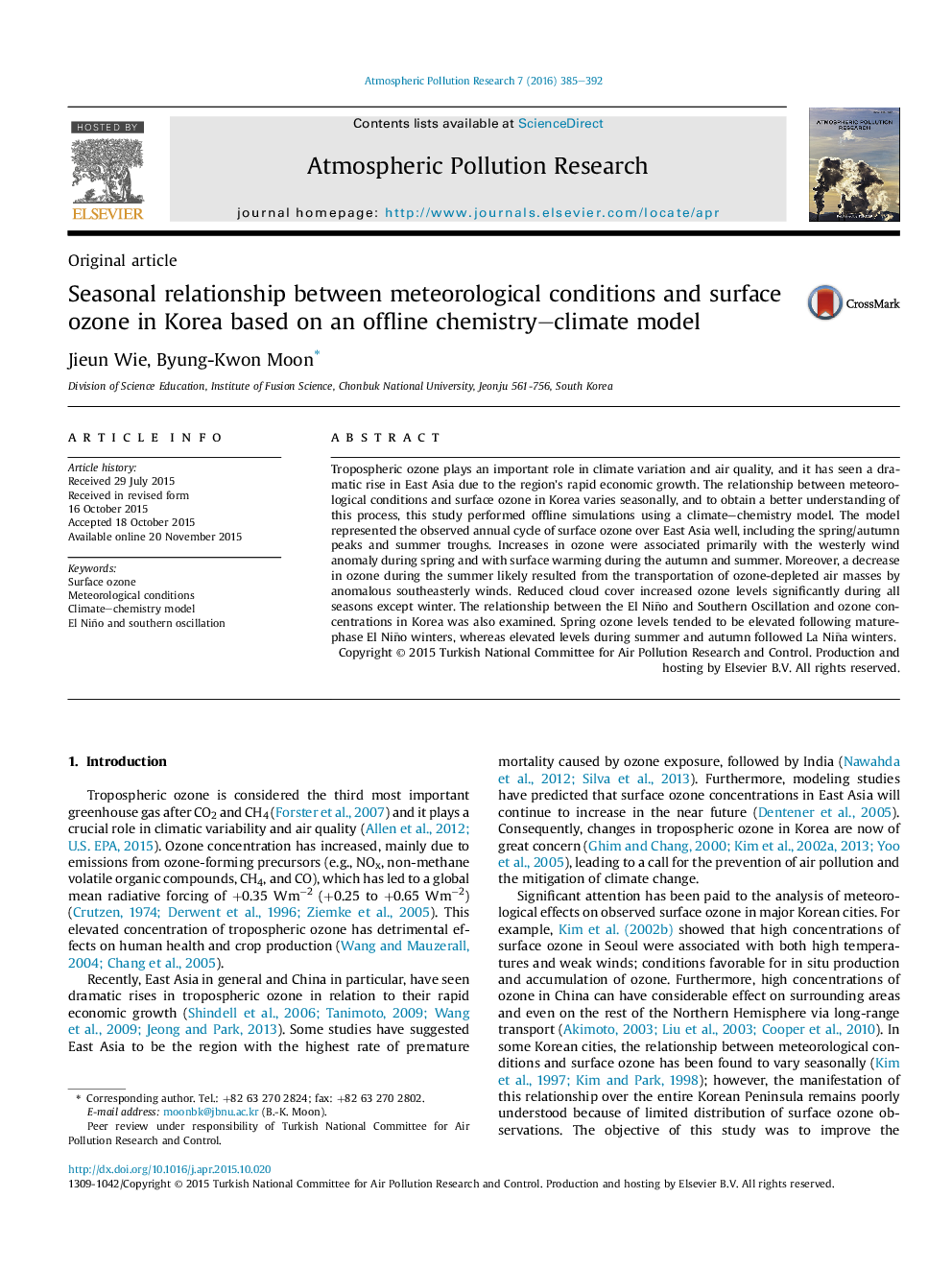| Article ID | Journal | Published Year | Pages | File Type |
|---|---|---|---|---|
| 4434517 | Atmospheric Pollution Research | 2016 | 8 Pages |
Tropospheric ozone plays an important role in climate variation and air quality, and it has seen a dramatic rise in East Asia due to the region's rapid economic growth. The relationship between meteorological conditions and surface ozone in Korea varies seasonally, and to obtain a better understanding of this process, this study performed offline simulations using a climate–chemistry model. The model represented the observed annual cycle of surface ozone over East Asia well, including the spring/autumn peaks and summer troughs. Increases in ozone were associated primarily with the westerly wind anomaly during spring and with surface warming during the autumn and summer. Moreover, a decrease in ozone during the summer likely resulted from the transportation of ozone-depleted air masses by anomalous southeasterly winds. Reduced cloud cover increased ozone levels significantly during all seasons except winter. The relationship between the El Niño and Southern Oscillation and ozone concentrations in Korea was also examined. Spring ozone levels tended to be elevated following mature-phase El Niño winters, whereas elevated levels during summer and autumn followed La Niña winters.
